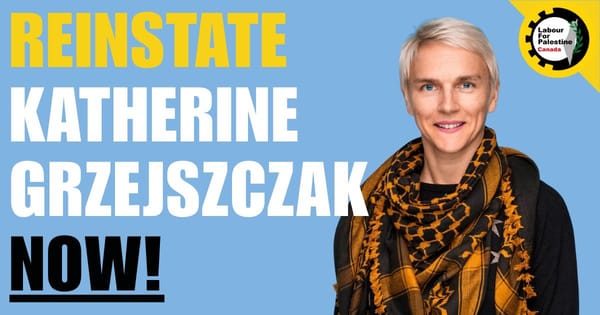
On March 10, Uber released its plan for “Flexible Work+,” which it dubs “a modern approach to app-based work in Canada.”
The tech company received some positive media coverage when Global News, rather uncritically, reported on Uber’s plan to supposedly “offer gig workers benefits and safety protections.”
The positive reviews had a short shelf life, however. Once organizations representing app-based workers such as Gig Workers United, labour lawyers and other worker advocates had a chance to view and weigh in on Flexible Work+, the sheen of Uber’s proposal quickly wore off.
In fact, Flexible Work+ is simply Uber’s latest effort to prevent its drivers in Canada from obtaining their full employment rights.
The Gig Economy’s Labour Model
Uber and other app-based companies have premised their business model on misclassifying workers as “independent contractors” and evading statutory employment rights, such as minimum wage laws, overtime, vacation, severance and public holiday pay, as well as various working time regulations. This bogus independent contractor status also denies app-based workers access to unionization and collective bargaining rights.
Yet workers and their advocates have increasingly challenged the gig economy’s reliance on employee misclassification through legal action and on-the-ground organizing.
In the summer of 2019, Foodora couriers in Ontario tried to unionize with the Canadian Union of Postal Workers (CUPW). Foodora appealed the workers’ application for union certification, arguing at the Ontario Labour Relations Board (OLRB) that its couriers, as independent contractors, were ineligible to unionize. The company then pulled out of Canada all together after the OLRB sided with CUPW, finding that couriers were “dependent contractors” with the right to unionize and collectively bargain.
Drivers in Ontario have also been pursuing legal action against Uber over employment misclassification and the denial of labour standards protections. For example, a Supreme Court of Canada decision from last summer cleared the way for workers in Ontario to proceed with a possible class-action lawsuit to obtain minimum wage protection, vacation and overtime pay, and other benefits outlined in the Employment Standards Act, the legislation covering basic employment standards in the province.
Uber, however, remains unwavering in its commitment to avoid having its workers classified as employees. Instead, the company blames: “Canada’s outdated labour system in which some workers get benefits and protections while others do not.”
Beginning in October 2020, Uber undertook a nationwide survey of its drivers and delivery people in Canada. The results, Uber claims, demonstrate that drivers value their “flexibility” but nevertheless find their lack of dependable income difficult.
I’ll leave aside the reliability of Uber’s “sample” of drivers (beneath the flashy graphic design, we aren’t offered much by way of a research methodology). Suffice to say, drivers wanting “flexibility” isn’t exactly news. That companies believe the only way for workers to have scheduling flexibility is by sacrificing their employment rights is in itself revealing.
What is Flexible Work+?
It’s within this context of mounting pressure for traditional employment law protections that we need to understand Uber’s Flexible Work+ proposal.
So, what exactly is Flexible Work+?
Somewhat paradoxically, the proposal involves “asking” provincial governments in Canada to require that rideshare app companies offer drivers “self-directed benefits” and access to training and other safety protections.
At first glance, this appears as a strange request. Why would a company ask a government to impose mandatory benefit packages on itself and its competitors? In actuality, there isn’t anything presently stopping Uber from providing its drivers with benefits, higher pay or any other employment perks. The company likely fears that were it to do so, this could be used as further evidence that it is, in fact, an employer. Uber therefore wants governments to create a new legal category between employee and contractor before providing new benefits to app-based workers.
In all likelihood the company is dangling the carrot of some minor benefits in front of workers in the hope of obtaining this sub-employment category from governments which would allow it to continue evading employment law.
Incidentally, these “self-directed” benefits are a lousy alternative to regular group benefits, as the former are basically individual spending accounts that don’t pool risk like traditional social insurance models (for example, Employment Insurance). Every individual has their own underfunded mini-welfare state — the ultimate neoliberal nightmare!
But if Uber’s plan for a sub-employment category in Canada sounds familiar, that’s because it is.
Internationalizing California’s Proposition 22
Gig economy companies recently enjoyed a resounding ballot initiative win in California with Proposition 22. This victory during the recent election in the United States allows the tech giants to continue to avoid state and federal employment law protections in their home state while creating a coveted sub-employment category for app-based workers.
The coalition of Silicon Valley companies — with Uber at the forefront — launched the “Yes on 22” campaign in response to the California legislature’s Assembly Bill 5 (AB-5). This legislation, which went into effect in January 2020, would have extended employment status to app and other contract workers by codifying a more expansive legal test for determining employment relationships.
Uber and its “Yes on 22” coalition partners spent more than $200 million on an impressive, if deceptive and underhanded, public relations campaign. Key to their strategy was offering workers new benefits, which, though they are an improvement, are well below what a legal standard employment relationship would provide. The victorious companies vowed to push for Proposition 22 style measures nationally.
Every indication is that Uber is currently internationalizing the Proposition 22 approach by seeking sub-employment categories in other jurisdictions. In the United Kingdom, the Supreme Court recently ruled that Uber drivers are “workers,” not independent contractors. While some unions and labour advocates counted this as a victory, it’s important to recognize that in the U.K., “worker” is a sub-employment category with fewer benefits and regulatory protections than an “employee.” Though this “worker” category is likely more robust than Uber would prefer, it’s nevertheless a form of sub-employment.
Uber’s new push for Flexible Work+ in Canada should be understood as the company’s next attempt to legally cement a form of sub-employment and deny workers access to full employment standards and collective bargaining rights. Despite what paltry benefits the tech giant is proposing, its objectives remain the same: to avoid minimum wage and other employment law protections, and to prevent workers from certifying unions.
Workers and the labour movement should see through this. Corporations and neoliberal politicians have been telling the same story since the ‘70s — that rolling back labour regulations and reducing social spending will somehow generate economic prosperity and make us all better off. The resulting low growth, low wage economy — of which gig work is simply the latest example — is convincing far fewer people. And that’s a good sign.






